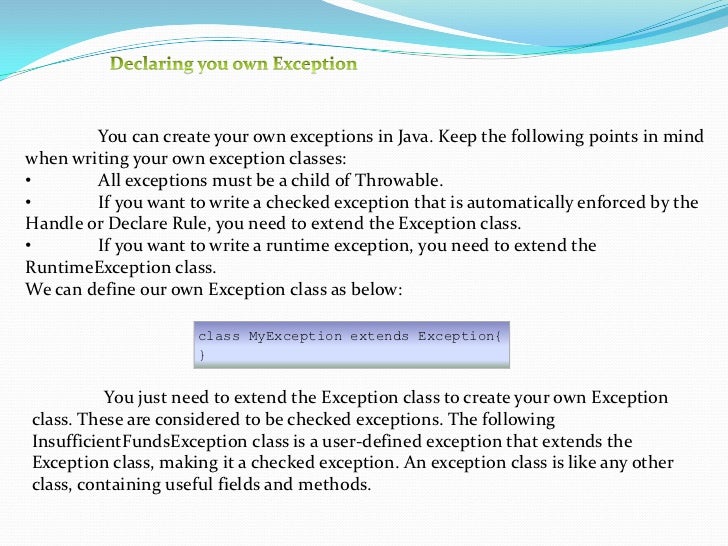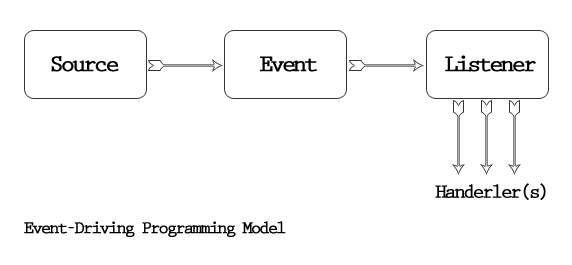
Jun 28, · public class MyEventSource { private List _listeners = new ArrayList(); public synchronized void addEventListener(MyEventClassListener listener) { blogger.com(listener); } public synchronized void removeEventListener(MyEventClassListener listener) { blogger.com(listener); } // call this method whenever you want to notify //the event Estimated Reading Time: 1 min Dec 07, · let event = new Event(type [, options]); Arguments: type – event type, a string like "click" or our own like "my-event". options – the object with two optional properties: bubbles: true/false – if true, then the event bubbles. cancelable: true/false – if true, then the “default action” may be prevented May 11, · Custom events in Analytics. The telemetry is available in the customEvents table in Application Insights Logs tab or Usage Experience. Events may come from trackEvent..) or Click Analytics Auto-collection Plugin. If sampling is in operation, the itemCount property shows a value greater than 1. For example itemCount==10 means that of 10 calls to trackEvent(), the
Create a custom event in Java - Stack Overflow
The canonical reference for building a production grade API with Spring. Java annotations are a mechanism for adding metadata information to our source code. They're a powerful part how to write custom events in java Java that was added in JDK5. Annotations offer an alternative to the use of XML descriptors and marker interfaces.
Although we can attach them to packages, how to write custom events in java, classes, interfaces, methods, and fields, annotations by themselves have no effect on the execution of a program. In this tutorial, we're going to focus on how to create and process custom annotations. We can read more about annotations in our article on annotation basics. We're going to create three custom annotations with the goal of serializing an object into a JSON string.
We'll use the first one on the class level, to indicate to the compiler that our object can be serialized. Then we'll apply the second one to the fields that we want to include in the JSON string. Finally, we'll use the third annotation on the method level, to specify the method that we'll use to initialize our object.
The first step toward creating a custom annotation is to declare it using the interface keyword:. The next step is to add meta-annotations to specify the scope and the target of our custom annotation:, how to write custom events in java. As we can see, our first annotation has runtime visibility, and we can apply it to types classes. Moreover, it has no methods, and thus serves as a simple marker to mark classes that can be how to write custom events in java into JSON. In the same fashion, we create our second annotation to mark the fields that we are going to include in the generated JSON:.
When creating custom annotations with methods, we should be aware that these methods must have no parameters, and cannot throw an exception.
Also, the return types are restricted to primitives, String, Class, enums, annotations, and arrays of these types, and the default value cannot be null. Let's imagine that before serializing an object to a JSON string, we want to execute some method to initialize an object. For that reason, we're going to create an annotation to mark this method:. We declared a public annotation with runtime visibility that we can apply to our classes' methods.
Now let's see how we can use our custom annotations. For instance, let's imagine that we have an object of type Person that we want to serialize into a JSON string.
This type has a method that capitalizes the first letter of the first and last names. We'll want to call this method before serializing the object:. By using our custom annotations, we're indicating that we can serialize a Person object to a JSON string. In addition, the output should contain only the firstNamelastNameand age fields of that object. Moreover, we want the initNames method to be called before serialization.
For the sake of demonstration, we made initNames private, so we can't initialize our object by calling it manually, and our constructors aren't using it either.
So far we've seen how to create custom annotations, and how to use them to decorate the Person class. Now we're going to see how to take advantage of them by using Java's Reflection API.
The first step will be to check whether our object is null or not, as well as whether its type has the JsonSerializable annotation or not:. Then we look for any method with the Init annotation, and we execute it to initialize our object's fields:. The call of method. setAccessible true allows us to execute the private initNames method. After the initialization, we iterate over our object's fields, retrieve the key and value of JSON elements, and put them in a map.
Then we create the JSON string from the map:. Again, we used field. setAccessible tru e because the Person object's fields are private. Finally, we run a unit test to validate that our object was serialized as defined by our custom annotations:. In this article, we learned how to create different types of custom annotations. We then discussed how to use them to decorate our objects. Finally, we looked at how to process them using Java's Reflection API.
As always, the complete code is available over on GitHub. Follow the Java Category. REST with Spring The canonical reference how to write custom events in java building a production grade API with Spring. Learn Spring Security Core Focus on the Core of Spring Security 5.
Learn Spring Security OAuth Focus on the new OAuth2 stack in Spring Security 5. Learn Spring Data JPA The full guide to persistence with Spring Data JPA. Persistence The Persistence with Spring guides. REST The guides on building REST APIs with Spring. Security The Spring Security guides. Full Archive The high level overview of all the articles on the site.
Baeldung Ebooks Discover all of our eBooks, how to write custom events in java. Write for Baeldung Become a writer on the site. About Baeldung About Baeldung. Abstract Classes in Java Learn how and when to use abstract classes as part of a class hierarchy in Java. Marker Interfaces in Java Learn about Java marker interfaces and how they compare to typical interfaces and annotations.
Generic footer banner. Oldest Newest. Inline Feedbacks. View Comments. Load More Comments. Java sidebar banner. Follow the Java category to get regular info about the new articles and tutorials we publish here.
Spigot Plugin Development - 32 - Custom Events
, time: 17:04An Essential Guide To JavaScript Custom Events

Java Custom Exception. In Java, we can create our own exceptions that are derived classes of the Exception class. Creating our own Exception is known as custom exception or user-defined exception. Basically, Java custom exceptions are used to customize the exception according to user need. Consider the example 1 in which InvalidAgeException Java: Creating a custom event. Here's an example of how create your own events and listen to them. It's called the observer pattern. In this example the initiator prints "Hello" and the HelloListener responds with "Hello there!". interface HelloListener { void someoneSaidHello (); } class Initiater { private List listeners = new ArrayList (); public Dec 07, · let event = new Event(type [, options]); Arguments: type – event type, a string like "click" or our own like "my-event". options – the object with two optional properties: bubbles: true/false – if true, then the event bubbles. cancelable: true/false – if true, then the “default action” may be prevented
No comments:
Post a Comment